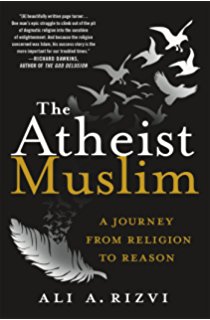Discovering Rewritten History
Brandon Sun, September 24, 2018 –
David McConkey
Earlier this summer, I was walking through the Brandon Cemetery,
planning a route for my Doors Open historical walking tour. I came
upon a grave that I had not noticed before. The headstone had been
changed; history had been rewritten. Sometimes rewriting history is
a good thing.
Let’s first step back a bit. “History” has two meanings. History
is what happened in the past. And that, of course, cannot be
changed. But history is also an account of the past. And that can be
changed: we discover new information and develop new insights.
There is a further distinction. As ordinary citizens, we don’t
much care about academic studies revising some historical details.
We are more interested in our public history: like statues in parks,
names of buildings, historical plaques, textbooks our kids read in
school, and stories about our past that we tell ourselves. As recent
news items show, these
can be very controversial!
Let’s return to the Brandon Cemetery, to the grave of Nick
Burtnyk. He died in 1915. On his headstone, there is a new oval
metal plaque. Images of barbed wire frame the words, “In Honour of
Those Who Lost Their Lives During Canada’s First National Internment
Operations.” A grave that had languished in obscurity for a century
is suddenly quite conspicuous. Now that is rewriting history!
That plaque is part of an ongoing effort encouraging people
across Canada to remember the internment camps of the First World
War. Those camps imprisoned thousands of “enemy aliens” – men who
had been born in countries that Canada was at war with. Affected
were those whom we today call Ukrainian-Canadians: immigrants
who had left the old Austro-Hungarian Empire seeking
a better life in Canada. Unfortunately for them, Canada
entered the Great War, to fight against not just Germany, but also
Austria.
After the war, with prisoners released and the camps closed, most
Canadians wanted to forget all about it. Who wants to think about
something bad that happened during the war?
We now regard the First World War internment camps as an
injustice that should be remembered. Knowing about those unsavoury
parts gives us a more complete understanding of our past. After all,
we are guided in the present by what we choose to remember of the
past.
And that includes Brandon’s past. From the fall of 1914 until the
summer of 1916, an internment camp was set up in the Winter Fair
buildings on Victoria Avenue between 10th and 11th streets. At any
one time, the camp held as many as 900 prisoners.
After years of being forgotten, the
Brandon Internment Camp is now being remembered. In 1997, a
plaque about the camp was placed in front of City Hall. In 2014,
another plaque was placed where the camp actually was, which is now
the parking lot of the police station.
One of the prisoners in the Brandon Internment Camp was Nick
Burtnyk. We don’t know much about him. But we do know he became ill
and was taken to the Brandon General Hospital on Sept. 27, 1915. One
week later, Burtnyk died of pneumonia. On his death certificate, his
age was recorded as 50, his date of birth as 1865 (month and day
unknown), his birth place as Austria. Names of relatives were
unknown. For both his usual place of residence and for his
occupation, the answer was given as “Prisoner of War.”
On Burtnyk’s grave, the government-issue headstone was inscribed
with his name; that he died on Oct. 4, 1915; and the location in the
cemetery: Plot 18, Block G, Section 1. (On the stone itself, though,
his first name was spelled “Nik” and the Block erroneously
identified as “CW.”)
Over the years, anyone looking for the grave of Nick Burtnyk
could have searched in vain. In the government registry of deaths in
Manitoba – as well as in the city’s record of burials in the
cemetery – there is no Nick Burtnyk. Instead, those sources list his
name as Nick Wurtnick.
Quite possibly, no one visited or even knew of the grave until last year when the plaque was installed on the headstone. The plaque was placed there by the Canadian First World War Internment Recognition Fund.
Quite possibly, no one visited or even knew of the grave until last year when the plaque was installed on the headstone. The plaque was placed there by the Canadian First World War Internment Recognition Fund.
A forgotten prisoner of an internment camp 100 years ago now has
some recognition. How should Nick Burtnyk be remembered? How does
remembering him shed light on our society today? As we rewrite our
history, those are some of the questions to ponder.
* *
* *
See also: Dark Side of Brandon’s Past
Reflections on “Brandon’s Ghetto”
Reflections on the Great War
Lessons from the Election of December 1917
Look at Broader Context Before Removing Building Names
An Education Lesson From 100 Years Ago
How Do We Remember War?
QUICK CONTACT:
David McConkey,
Brandon, Manitoba
Send me an email
My Sites / Interests
- Citizen Active
- Columns
- The Great War
- Live Well, Do Good
- Manitoba History
- Obituary Guide
- Reviews
- The War on Drugs
Some Reviewed Books:
The War on Drugs:
A Failed Experiment

The Atheist Muslim:
A Journey from Religion to Reason

Stranger Than We Can Imagine:
An Alternative History of the 20th Century
Heretic:
Why Islam Needs a Reformation Now
Islam and the Future of Tolerance:
A Dialogue

Extraordinary Canadians:
Nellie McClung

The Greatest Show on Earth:
The Evidence for Evolution



